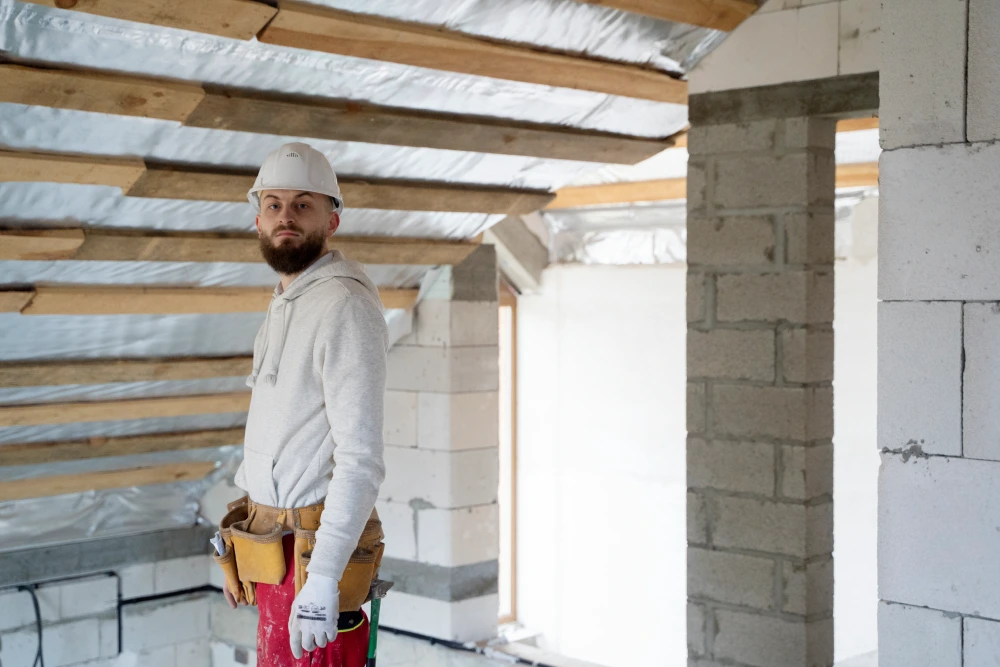Is replacing insulation worth it? Insulating your home properly is essential for effective heating and cooling. However, problems are bound to arise when the insulation in your home starts to fail. High energy costs, health dangers, and your HVAC system has to work nonstop to meet demand. It’s crucial to understand the signs you need to replace the insulation in your attic and when to expect your insulation to deteriorate. To learn more about whether replacing attic insulation is worth it, continue reading this post.
5 Signs You Need Replacing Insulation In Your Home
Traditional attic insulation materials in your home, such as fiberglass or cellulose, have a tendency to settle, droop, and deteriorate with time. It’s probably time to replace the insulation in your home if you’re dealing with high energy costs, uncomfortable rooms, and other issues like dampness.
Here are some common signs you need to replace the insulation:
- Increased Energy Bills — If you notice a sudden spike in your energy bills, it could be a sign that your insulation is no longer effective. Poor insulation allows heat to escape in the winter and enter in the summer, making your heating and cooling systems work harder and increasing energy costs.
- Temperature Fluctuations —- Inconsistent temperatures throughout your home, with certain areas feeling much colder or warmer than others, may indicate insufficient or deteriorating insulation. This can lead to discomfort and difficulty maintaining a consistent and comfortable indoor climate.
- Visible Damage —- Insulation can deteriorate over time due to factors like moisture, pests, or age. If you see visible signs of damage, such as water stains, mold, or physical deterioration, it may be time to replace your insulation.
- Pest Infestations —- Insects and rodents are attracted to insulation materials for nesting. If you notice an increase in pest activity or find signs of infestation like droppings or nests, it could be a sign that your insulation is compromised and needs replacement.
- Drafts and Air Leaks —- If you feel drafts or notice air leaks around doors, windows, or other openings in your home, it may indicate that your insulation is not effectively sealing these areas. Insulation should create a barrier against outside air infiltration, and if it fails to do so, it might need to be replaced.
How Long Does Insulation Last?
The kind of insulation used, the quality of installation, and the location of the insulation within your home all affect how long it lasts. According to a survey made by the NAIMA (North American Insulation Manufacturers Association), almost 90% of American homes are underinsulated.
The majority of insulation materials should last 20 to 30 years before beginning to fade or break down. However, considerations like exposure to moisture outside can all affect how long insulation lasts.
Here are some general guidelines for the lifespan of common types of insulation:
- Fiberglass Insulation — Fiberglass insulation is known for its durability and can last for several decades. With proper installation and maintenance, it can typically last 20 to 30 years or more.
- Cellulose Insulation —- Cellulose insulation, made from recycled paper or other plant fibers, can also have a lifespan of around 20 to 30 years. It may be more susceptible to settling over time, which can affect its effectiveness.
- Spray Foam Insulation —- Spray foam insulation has a longer lifespan compared to some other types. When properly installed, it can last 30 years or more. It forms a durable and airtight barrier, providing excellent insulation over an extended period.
- Polyurethane Foam Board —- Polyurethane foam boards are durable and long-lasting. With good maintenance, they can last 20 to 30 years or more. They are resistant to moisture and pests, contributing to their longevity.
Is Replacing Insulation Worth It?
If your existing insulation is dust-free, dry, and not squished, it might not be wise and cost-effective to replace it. If you leave your old insulation in place, it will continue to provide you with benefits and an extra layer of insulation on top.
However, if your old insulation is at joist depth, it is time to replace it with the new insulation.
It is worth the effort to replace the attic insulation materials if you discover that they are damp. The wetness will spread if the old, wet insulation is left and the new insulation is added on top of it. This will simply result in mold growth and increased gas costs. It is a good idea to replace the insulation with a new material.
Why Replacing Insulation Is Worth It
Before making a decision to replace the insulation in your home, it’s advisable to consult with insulation professionals who can assess the current condition of your insulation, provide recommendations, and estimate potential energy savings.
Here are some reasons why replacing insulation is worth it.
- Comfort and Indoor Air Quality — Improved insulation can enhance the comfort of your home by maintaining more consistent temperatures throughout. It can also contribute to better indoor air quality by reducing the infiltration of outdoor pollutants and allergens.
- Home Resale Value — Upgrading insulation can be an attractive selling point for potential homebuyers, especially if it contributes to energy efficiency and lower utility costs. It may increase the resale value of your home and make it more marketable.
- Environmental Impact — If you are environmentally conscious, upgrading to more sustainable and eco-friendly insulation materials can be a worthwhile investment. Some modern insulation options use recycled or renewable materials and have a lower environmental impact.
- Government Incentives —- Check if there are any government incentives, rebates, or tax credits available for upgrading insulation in your area. In some cases, financial incentives can make the decision more economically attractive.
- Health Considerations —- If your existing insulation has mold or pest issues or if you have concerns about indoor air quality, replacing insulation can address these issues and contribute to a healthier living environment.

Frequently Asked Questions
How often should insulation be replaced?
Insulation typically lasts 20-30 years, but it depends on factors like material and environmental conditions. Regular inspections help determine when replacement is needed.
What are signs that insulation needs replacement?
Signs include increased energy bills, temperature fluctuations, visible damage (mold, pests), drafts, and air leaks.
Does replacing insulation improve energy efficiency?
Yes, replacing old or inadequate insulation with newer, more efficient materials can significantly improve energy efficiency, leading to lower utility bills.
Are there government incentives for insulation replacement?
Check local and federal programs; incentives, rebates, or tax credits may be available to offset the cost of upgrading insulation.
Can I replace the insulation myself, or should I hire a professional?
While some insulation projects are DIY-friendly, hiring a professional ensures proper installation, maximizing effectiveness. Professional assessments can also identify specific needs for your home.
Conclusion
Hopefully, this post has helped you find answers to the topic “Is replacing insulation worth it?” Comfort is the main advantage of having a well-insulated home. Because your home will feel comfortable and warm in the winter and cool and airy in the summer, your heating and cooling systems won’t have to work as hard, which will eventually result in cheaper monthly energy bills. If you need professional assistance installing or replacing insulation in your home, simply contact us today.




